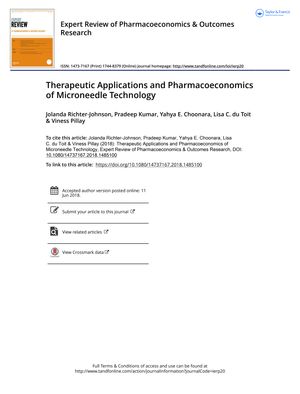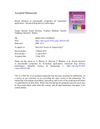Therapeutic Applications and Pharmacoeconomics of Microneedle Technology
June 2018
in “
Expert Review of Pharmacoeconomics & Outcomes Research
”

TLDR Microneedle technology is beneficial for drug delivery and could make vaccinations cheaper and more accessible.
The document from June 14, 2018, reviews the therapeutic applications and pharmacoeconomics of microneedle (MN) technology, highlighting its benefits for drug delivery, including the ability to administer large molecules and avoidance of first-pass metabolism. MNs are projected to drive the growth of the transdermal market, estimated to reach $95.57 billion by 2025, due to the increasing number of chronic disease patients and demand for pain-free drug administration. Clinical trials have focused on MNs for vaccination and insulin delivery, with a phase III study showing high patient satisfaction for MN-based influenza vaccination. MNs are cost-competitive, do not typically require refrigeration, and are single-use, which reduces disease transmission risk. Regulatory standards specific to MNs are still needed. The document also states that MNs could reduce vaccination costs, with measles vaccination being more cost-effective using MNs ($0.95) compared to traditional methods ($1.65). Despite the potential of MNs to replace conventional vaccinations and increase coverage, especially in developing countries, their success depends on overcoming regulatory, manufacturing, safety, and cost-effectiveness challenges.


